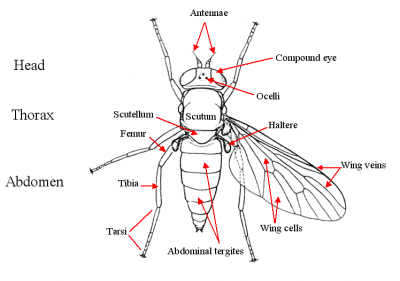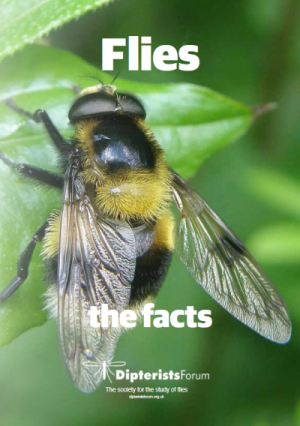What is a true fly?
True flies make up an order of two-winged insects known as the Diptera ("di-ptera" = two-winged). They represent a significant proportion of our national biodiversity – over a quarter of all our insects are flies! Entomologists who specialise in them are dipterists.
Why do flies have only two wings (one pair), when most insects have four (two pairs)? The hind wings in flies are reduced and modified to structures called halteres which help them to balance and manoeuvre when flying. These look rather like drumsticks or lollipops and the best fly to see them on is a big cranefly (daddy-long-legs) [photo].
Most flies have four development stages as in butterflies: egg-larva-pupa-adult (imago).
Fly diversity
Do you know that there are about 7,000 species of fly in Britain ranging from the largest "daddy-long-legs" to the smallest "moth fly (owl midge)" the size of a pin head? Flies can be beautiful, fascinating and spectacular. There are flies that mimic striped wasps and others that mimic fluffy bees (and neither sting!) not to mention the picture wing flies – modern art indeed.
Familiar families of flies include hoverflies, soldierflies, robberflies, beeflies, horseflies, mosquitoes, house flies, fruit flies and, yes, midges. There are about 100 different families of flies in the British Isles.
The huge variety in body shape, colour, size and life style is one of the reasons why flies are so interesting to study. We have more species of fly in the British Isles than any other order of insects apart from the Hymenoptera (bees, wasps, ants, etc). Worldwide, the order with the most described species is Coleoptera (beetles), but some of the largest families are tropical and not found in the British Isles.
Flies and us
Flies are often thought of as pests- and some are. But many more are essential for a healthy environment and of direct economic benefit to humans.
To find out more, see our leaflet Flies – the facts.
See also:


